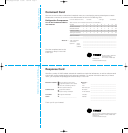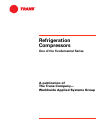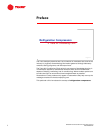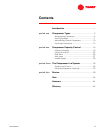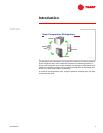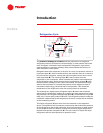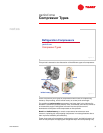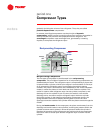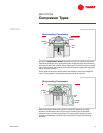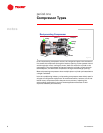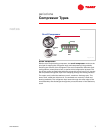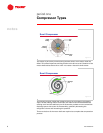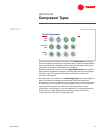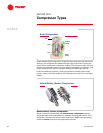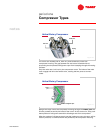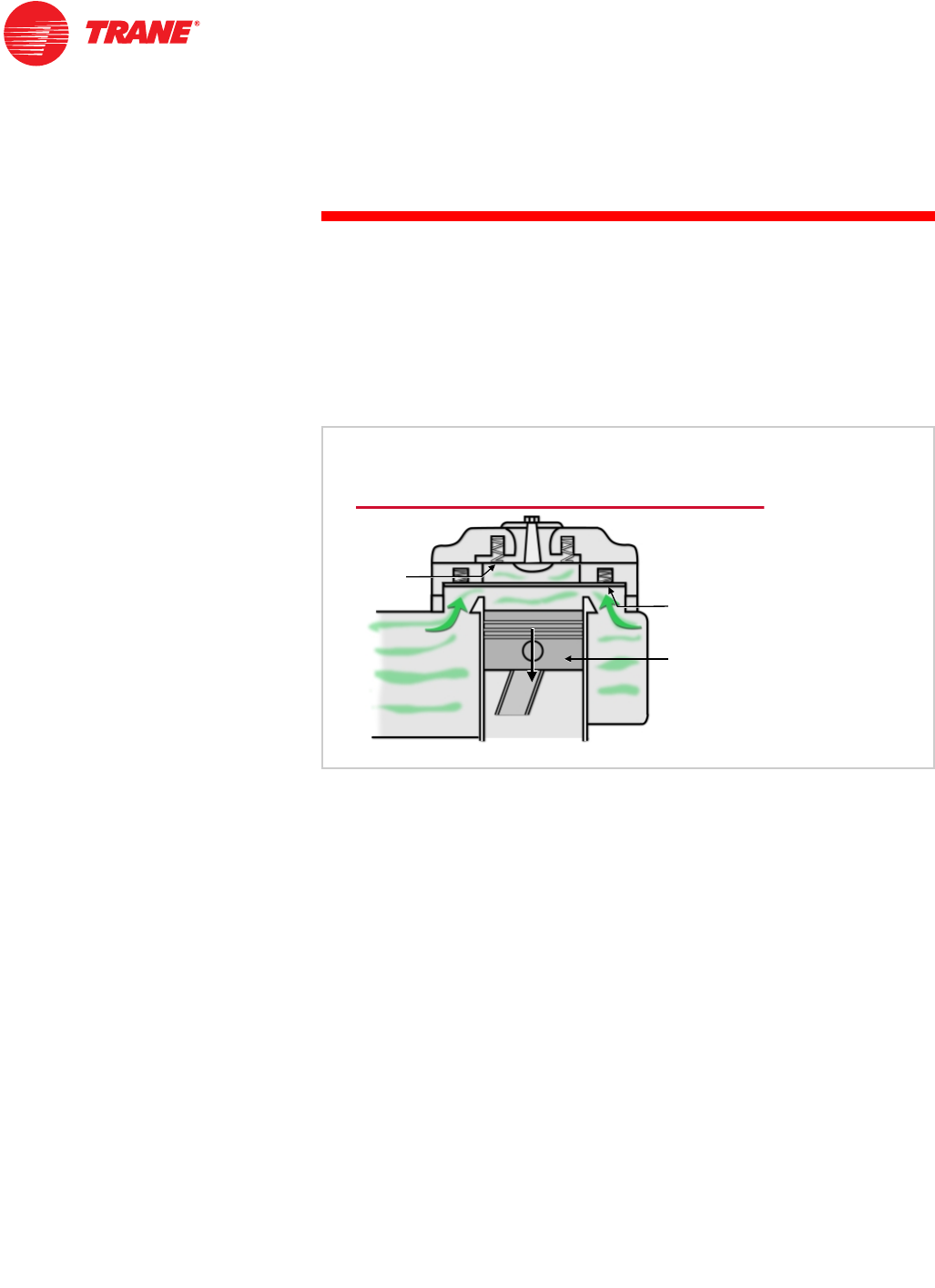
4 TRG-TRC004-EN
notes
period one
Compressor Types
gradually shrinking the volume of the refrigerant. Thus, they are called
positive-displacement compressors.
In contrast, centrifugal compressors use the principle of dynamic
compression, which involves converting energy from one form to another in
order to increase the pressure and temperature of the refrigerant. The
centrifugal compressor uses centrifugal force, generated by a rotating
impeller, to compress the refrigerant vapor.
Reciprocating Compressor
The first type of compressor to be discussed is the reciprocating
compressor. The principles of operation for all reciprocating compressors are
fundamentally the same. The refrigerant vapor is compressed by a piston that
is located inside a cylinder, similar to the engine in an automobile. A fine layer
of oil prevents the refrigerant vapor from escaping through the mating
surfaces. The piston is connected to the crankshaft by a rod. As the crankshaft
rotates, it causes the piston to travel back and forth inside the cylinder. This
motion is used to draw refrigerant vapor into the cylinder, compress it, and
discharge it from the cylinder. A pair of valves, the suction valve and the
discharge valve, are used to trap the refrigerant vapor within the cylinder
during this process. In the example reciprocating compressor shown, the
spring-actuated valves are O-shaped, allowing them to cover the valve
openings around the outside of the cylinder while the piston travels through the
middle.
During the intake stroke of the compressor, the piston travels away from the
discharge valve and creates a vacuum effect, reducing the pressure within the
cylinder to below suction pressure. Since the pressure within the cylinder is
less than the pressure of the refrigerant at the suction side of the compressor,
the suction valve is forced open and the refrigerant vapor is drawn into the
cylinder.
5HFLSURFDWLQJ&RPSUHVVRU
SLVWRQ
SLVWRQ
UHIULJHUDQW
UHIULJHUDQW
YDSRU
YDSRU
F\OLQGHU
F\OLQGHU
GLVFKDUJH
GLVFKDUJH
YDOYH
YDOYH
URG
URG
VXFWLRQ
VXFWLRQ
YDOYH
YDOYH
LQWDNH
VWURNH
Figure 6



